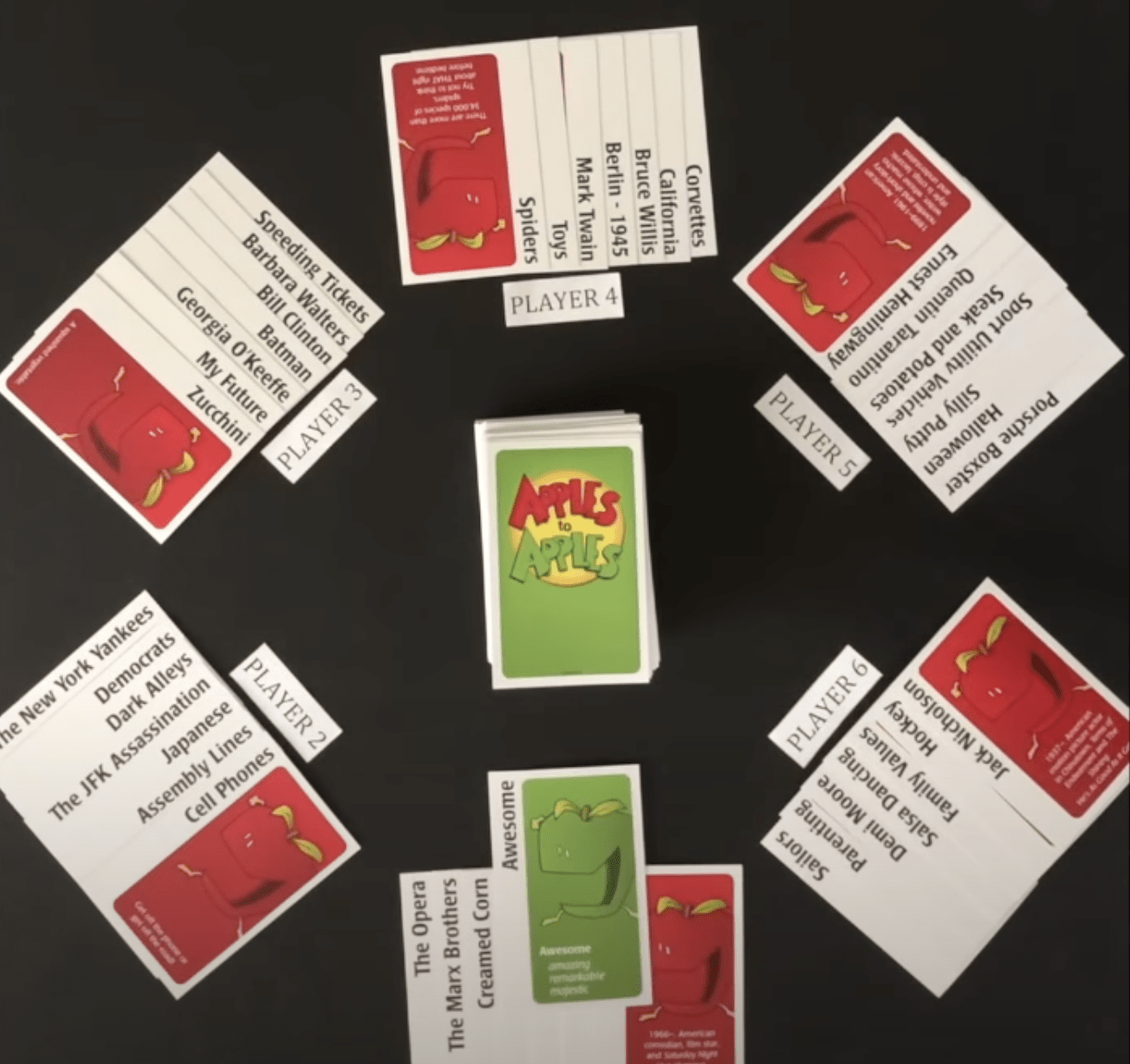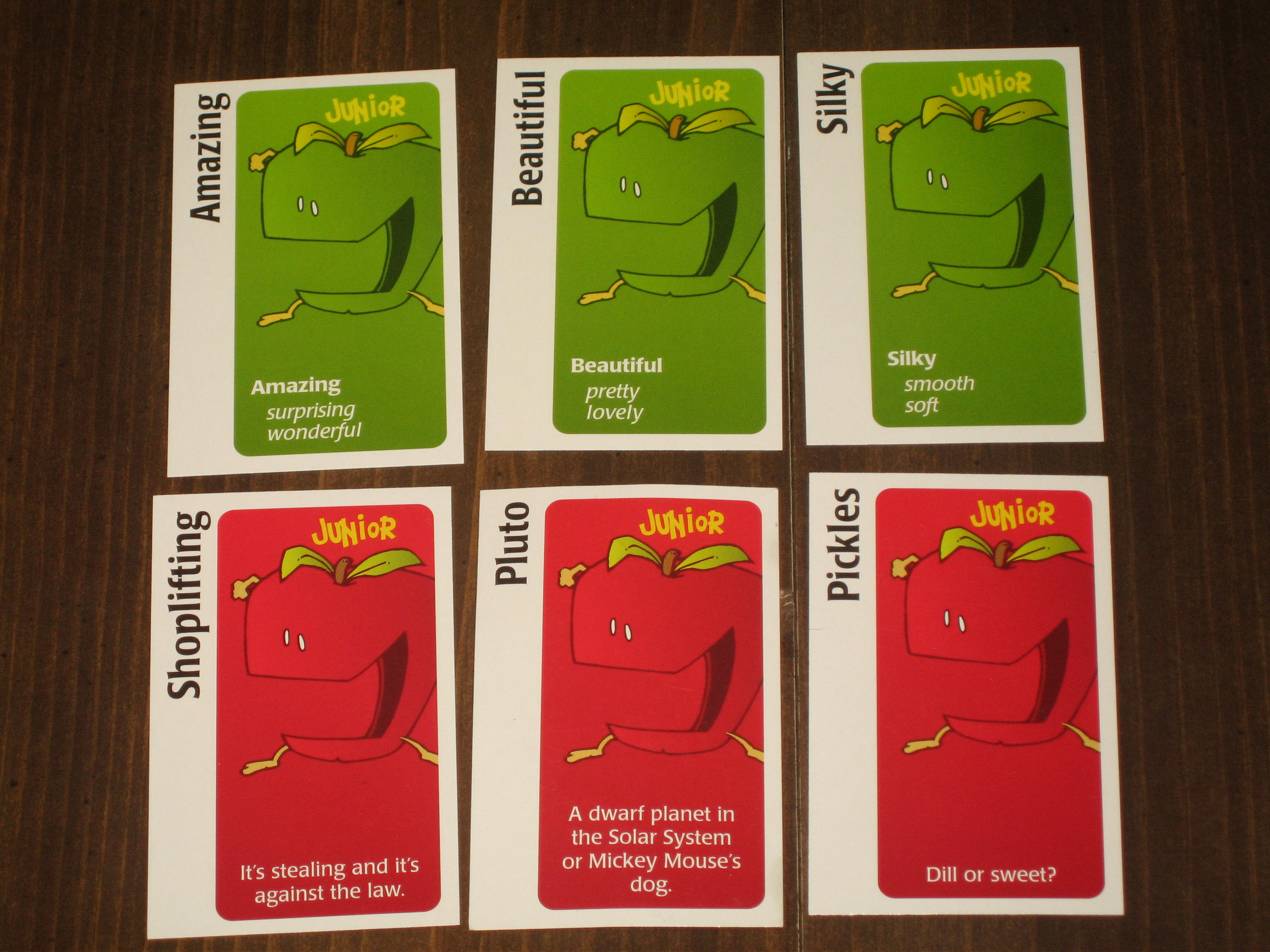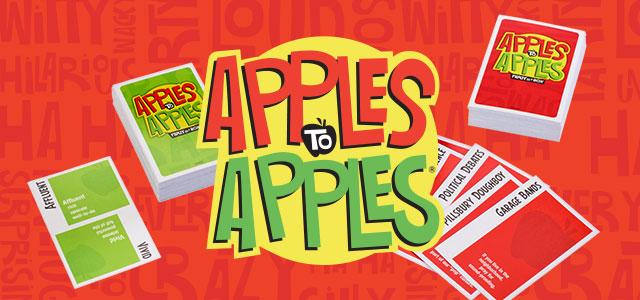I picked the judging game – Apples to Apples
Central Argument
Apples to Apples leverages the judging mechanism to enhance group dynamics and strengthen connections among players. The role of the judge rotates among players, ensuring active participation and engagement, which helps to maintain a balanced and inclusive game environment. This mechanism not only encourages social interaction and humor but also promotes a deeper understanding of the players’ personalities and preferences.
Game Information
Name of the game: Apples to Apples
Creator: Matt Kirby
Platform: Tabletop card game
Target Audience: Apples to Apples is designed for a broad audience like families, friends, and even casual acquaintances. It offers universal appeal, making it ideal for players of various ages and backgrounds. The simplicity of the rules and the social nature of the game make it accessible to children and adults alike. However, because it has a judging nature, I personally feel like it is more fun with people who you know quite well, so players don’t feel bad when judging strangers.
Learning and Analysis
Formal Elements
Objectives: To win the most rounds by playing cards that the judge picks the best match to a descriptor card.
Procedures: Players take turns being the judge, who selects a descriptor card, while others submit potential matching cards from their hands.
 (Fig1 – Judges received cards without knowing who selected which cards)
(Fig1 – Judges received cards without knowing who selected which cards)
Rules: The judge has complete discretion in choosing the winning card, which can be based on humor, poignant accuracy, or personal preference, liked shown in Figure 2.
 (Fig2 – Judges picked the winning card that they think is based on Cute)
(Fig2 – Judges picked the winning card that they think is based on Cute)
Outcome: Rounds continue until a player reaches a predetermined number of wins, commonly set at the beginning of the game.
What Type of Fun?
Challenge: While the game itself is not challenging in the traditional sense, the challenge lies in persuading the judge through the strategic selection of cards.
Fellowship: The game fosters a communal atmosphere where laughter and discussions about card choices prevail.
Expression: Players express their personalities and humor through their card choices, revealing insights into their thinking.
MDA
In Apples to Apples, the judging mechanism serves MDA so that it builds group dynamics and relationships. (M) In the game the mechanics are centered around the judging process where in each round, one player acts as the judge, drawing a descriptor (green) card from the deck. Other players select from their hand of noun (red) cards the one they believe best matches or amusingly contrasts the descriptor, as shown in the picture below. The judge then reviews all submissions without knowing who played which card and selects the one they find most fitting or entertaining. The players can also pick something humorously unrelated items like “Zucchini” for the descriptor “Scary” depending on their strategy and the judge’s perceived sense of humor.
 (Fig3 – Procedure)
(Fig3 – Procedure)
(D) The dynamics of Apples to Apples emerge from the interactions prompted by this judging mechanism. Players must anticipate the judge’s preferences and sense of humor, which can vary with each round as the role of the judge rotates. This anticipation and strategy lead to lively discussions and a lot of laughter(attached are some funny examples in Figure 4), especially when a nonsense card wins the round.
 (Fig4 – Laughter Examples)
(Fig4 – Laughter Examples)
For example, when a player known for loving Disney becomes the judge, others might strategically play cards like “Pluto” when the descriptor is “Beautiful.” This dynamic interaction often leads to players explaining their choices, thus sharing personal interests and humor, fostering connections among the group. (A) The aesthetics of Apples to Apples are strongly influenced by the social interactions that judging promotes. The fellowship, expression, and challenge of social interaction that occurs during card selection and judging, and the personal connections that are reinforced or discovered through gameplay. For example, Consider a round where the descriptor card is “Heroic.” The judge might burst into laughter and choose a card like “My Mom,” played by a player who knows the judge well, creating a heartfelt and humorous moment appreciated by the entire group.
Hence, Judging in Apples to Apples is not just a game function; it is a trigger for social interaction. Each judgment can reveal personal biases, preferences, and a sense of humor, providing insights into the judge’s personality. This process encourages players to engage and get more deeply with one another by their judging preferences, fostering a sense of camaraderie and understanding. Players learn to think from other players’ perspectives to choose the most appealing card for the current judge. By rotating the judge, each player has an equal opportunity to influence the game’s outcome, making everyone feel involved and valued. Discussing the reasons behind choices and the judge’s decisions often leads to deeper conversations, enhancing social bonds. Repeated gameplay can build stronger relationships as players become more familiar with each other’s personalities and preferences.
Through the MDA, the judging process in Apples to Apples not only dictates the gameplay but also shapes the social experience, making each game unique and tailored to the specific group playing. This leads to an enjoyable game that can serve as a social tool for building and strengthening connections.




